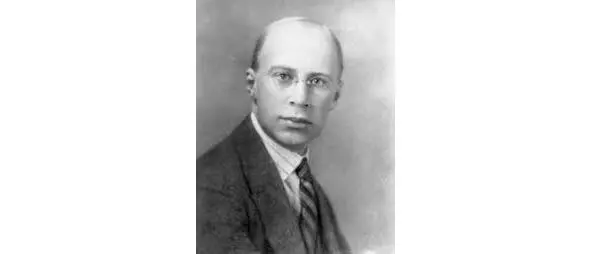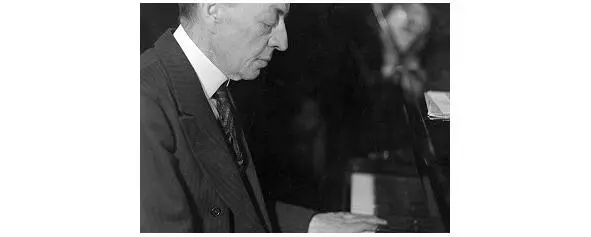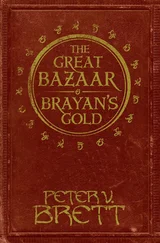5. In 1908, Nielsen became the conductor of the Royal Theater. Though he was met with some criticism and public resistance for his continued departure from the traditions of romanticism in such works as his Third Symphony ( Sinfonia espansiva, 1910—1911) and his Violin Concerto (1911), he was emerging to undeniable predominance in Danish music.
6. Visiting London in 1923 to conduct the London Symphony Orchestra with his Violin Concerto and Fourth Symphony , he had studied up on English in a Hundred Hours sufficiently to crack a joke, “Gentlemen, I am glad to see you. I hope I also will be glad to hear you.”
7. He once went to tea with the Danish Queen Alexandra, the Queen Mother, and sat with the top button of his trousers undone throughout the proceedings. Perhaps making room for some Danish pastries.
8. Nielsen found the inspiration for his Second Symphony , “The Four Temperaments,” while sitting in one. As the great Dane himself explained, “On the wall of the room where I was drinking a glass of beer with my wife and some friends hung an extremely comical colored picture, divided into four sections in which “The Temperaments” were represented and furnished with titles: “The Choleric,” “The Sanguine,” “The Melancholic” and “The Phlegmatic.”
9. He was in his 60s and already suffering from heart disease when he participated in the rehearsals for a new production of Maskarade in Copenhagen. When there was some trouble with the ropes during the dress rehearsal, he offered to hoist himself up into the fly loft by his arms to fix the snags.
10. Nielsen was admitted to Copenhagen’s National Hospital (Rigshospitalet) on October 1, 1931 following a series of heart attacks. He died there at ten minutes past midnight on October 3rd, surrounded by his family. His last words to them were, “You are standing here as if you were waiting for something.”

Sergei Prokofiev (1891—1953)
1. Sergey Prokofiev was born in 1891 in Sontsovka (now Sontsivka, Pokrovsk Raion, Donetsk Oblast, eastern Ukraine), a remote rural estate in the Yekaterinoslav Governorate of the Russian Empire.
2. Sergei took to music at a very young age, an interest which his parents enthusiastically supported. He had already written a few piano pieces by the time he discovered opera, a product of a family trip to Moscow, and his three act The Giant (1900) commemorated his childhood games in operatic form.
3. In the summer of 1917, Prokofiev composed his first symphony, the Classical , which was written, he said, in the style Haydn would have used if he had been alive.
4. Prokofiev’s first major orchestral success was the Scythian Suite , compiled from music he composed for Sergei Diaghilev. Henri Matisse was commissioned to draw the portrait of Prokofiev, which was published in the program for the season of the Ballets Russes in Paris in May 1921.
5. Prokofiev was a passionate chess player who became friends with world chess champions José Raúl Capablanca, whom he beat in 1914, and Mikhail Botvinnik.
6. Prokofiev’s nine ballets make up an important part of his body of work, but he took to the genre slowly. His early sensibilities were a better fit for operas and cantatas, and it was only with the success and heavy-handed influence of ballet impresario Sergei Diaghilev he began to work in this challenging, risky genre. Romeo and Juliet (1936) and Cinderella (1944) are among his best-remembered works in any category.
7. In 1938, Prokofiev collaborated with film director Eisenstein on Alexander Nevsky . Prokofiev composed some of his most brilliant and dramatic music for this work. He later adapted much of his score into a large-scale Cantata for mezzo-soprano, orchestra, and chorus which was extensively performed and recorded.
8. Prokofiev was already considering making an opera from Tolstoy’s War and Peace when Germany invaded Russia on June 22, 1941. The conflict spurred him on and he completed his original composition version within two years.
9. Towards the end of his life, Prokofiev enjoyed personal and artistic support from a new generation of Russian performers, notably the pianist Richter and cellist Rostropovich, for whom he composed his Symphony-Concerto .
10. Prokofiev died at the age of 61 on March 5, 1953, but unfortunately very few noticed as it was the very day Stalin’s death was announced.

Sergei Rachmaninov (1873—1943)
1. Sergei Rachmaninov was born on April 1, 1873 in Semyonovo. As a young man he consistently amazed his teachers with his jaw-dropping ability as a pianist and composer. He created a frenzy with his First Piano Concerto when he was just 18.
2. The premiere of Rachmaninov’s First symphony in March 1897 was brutally punished by the critics. The deficiencies of the performance, conducted by Alexander Glazunov, were not commented on by the critics, but according to a memoir from Alexander Ossovsky, a close friend of Rachmaninov, Glazunov made poor use of rehearsal time and the concert’s program itself, which contained two other premieres.
3. Many pianists fear Rachmaninov’s Piano Concerto No 3 , deemed one of the most technically challenging concertos in the classical repertoire. Joseph Hofmann, to whom the work was dedicated, never performed it in public. The concerto had its first performance on November 28th, 1909, by Rachmnaninov himself. Several weeks later, Gustav Mahler conducted it.
4. It was after completing his first major choral work, Cantata Vesna (The Spring) in 1902, when Rachmaninov made the surprise announcement he was marrying his cousin, Natalya. This caused a bit of a stir, as in Russia first cousins were not permitted to marry. But they proceeded with the marriage, and their daughter Irina was born in May 1903.
5. Rachmaninov composed his Symphony No. 2 in Dresden, where he and his family lived for the best part of four years from 1906. Writing the symphony was a daunting affair for the composer; however, it was a resounding success and has remained one of the most popular of all of his works.
6. Rachmaninov had a very deep and personal religious faith which he expressed beautifully in 1915 through his unaccompanied All-Night Vigil . It is separated into two parts – the evening Vespers and the morning Matins – both full of exquisitely rich harmonies.
7. The 1917 Russian Revolution meant the end of Russia as the composer had known it. In December 1917, he left Petrograd for Helsinki on an open sled with his wife and daughters. Now in his 40s, Rachmaninov launched a third and more lucrative strand of his career as a concert pianist.
8. Rachmaninov saw the United States as the future, and from his arrival there in 1918 he found himself in great demand. So much so his composing became limited to the summer months. Things reached fever pitch during the 1922—23 concert season when Rachmaninov gave more than seventy performances between November and the end of March. He made enough money to build a house in Los Angeles which was an exact replica of his original Moscow home.
9. By the time of his final tour in 1943, Rachmaninov was already seriously ill with lung cancer brought on by a lifetime of heavy smoking. It seems almost prophetic his final recital on February 17, 1943 included Chopin’s famous funeral march. He died a month later in Beverly Hills, four days before his 70th birthday.
Читать дальше














